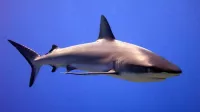Monterey Bay Aquarium, a non-profit public aquarium in Monterey, California, is renowned for its focus on Monterey Bay's marine habitats. It pioneered the display of a living kelp forest and the animal husbandry of jellyfish. The aquarium achieved a milestone by successfully caring for and displaying a great white shark. Its conservation efforts extend to sea otters, birds, and tunas. Seafood Watch, a sustainable seafood advisory list initiated by the aquarium in 1999, has significantly impacted discussions on sustainable seafood. The aquarium was also home to notable animals like Otter 841 and Rosa, the oldest living sea otter before her death.
1914: First Proposal for an aquarium
In 1914, the first of three separate proposals occurred for an aquarium in Monterey County. Financial backing and public support for the idea was not sufficient.
1925: Second Proposal for an aquarium
In 1925, the second of three separate proposals occurred for an aquarium in Monterey County. Financial backing and public support for the idea was not sufficient.
1939: Inspiration from Ed Ricketts' Book
In 1939, the idea to display marine habitats was inspired by the work of ecologist Ed Ricketts in his book Between Pacific Tides.
1944: Third Proposal for an aquarium
In 1944, the third of three separate proposals occurred for an aquarium in Monterey County. Financial backing and public support for the idea was not sufficient.
1967: Stanford Addresses Concerns
In 1967, Stanford University, after being convinced by scientists at Hopkins Marine Station about the growing industry on Cannery Row, purchased the Hovden Cannery property.
1973: Hovden Cannery Closes
In 1973, Hovden Cannery closed after its parent company moved the plant, and Hopkins used the facility as a warehouse.
April 1978: Monterey Bay Aquarium Foundation Created
In April 1978, Lucile and David Packard created the Monterey Bay Aquarium Foundation after a feasibility study predicted a large number of visitors. The foundation then purchased the Hovden property from Stanford for nearly US$1 million.
1980: Progress Report on Aquarium Planning
In 1980, a progress report revealed the founders' aim to share the marine life of the region through exhibits showcasing Monterey Bay and central California aquatic habitats.
1981: National Aquarium
In 1981, Baltimore's National Aquarium focused on magnificent coral reef exhibits or big sharks.
October 1984: Aquarium Opens
In October 1984, Monterey Bay Aquarium opened, distinguished as the first to showcase a living kelp forest. Its biologists have also pioneered animal husbandry of jellyfish.
October 20, 1984: Aquarium Opens to the Public
On October 20, 1984, Monterey Bay Aquarium opened as the largest public aquarium in the United States, with 11,000 visitors attending the opening day and around 30,000 people attending the day's festivities.
1984: Volunteers donated 3.2 million community service hours
Between 1984 and 2014, 8,500 Monterey Bay Aquarium volunteers donated 3.2 million community service hours.
1984: Began free access for students
In 1984, Monterey Bay Aquarium began providing free access to approximately 75,000 students, teachers, and chaperones from California each year.
1984: Aquarium Opens with 83 Tanks
In 1984, Monterey Bay Aquarium opened with 83 tanks in 12 galleries.
1984: First attempt to display a great white shark
In 1984, Monterey Bay Aquarium's first attempt to display a great white shark lasted 11 days and ended with the shark's death because it did not eat.
1984: Sea Otter Research and Conservation program began
In 1984, the Monterey Bay Aquarium initiated the Sea Otter Research and Conservation program to study and rehabilitate wild southern sea otters.
1984: Julie Packard Becomes Executive Director
Since the opening in 1984, Julie Packard has been the aquarium's executive director.
1985: Initial Display of Moon Jellies
In 1985, Monterey Bay Aquarium successfully displayed one tank of moon jellies.
1985: Jellyfish propagation began
Since 1985, Monterey Bay Aquarium has been deeply involved in jellyfish propagation, creating three temporary exhibitions and one permanent gallery. Their jellyfish collections have become the largest in the world.
1986: Filming location for Star Trek IV: The Voyage Home
In 1986, the Monterey Bay Aquarium served as the filming location for the fictitious Cetacean Institute in the film Star Trek IV: The Voyage Home.
1988: EHDD Wins National Honor Award
In 1988, EHDD was awarded a National Honor Award from the American Institute of Architects for the design of the Monterey Bay Aquarium.
1989: First Temporary Exhibition
In 1989, Monterey Bay Aquarium began creating temporary exhibitions to display animals from outside Monterey Bay, starting with "Mexico's Secret Sea", which focused on the Sea of Cortez.
1989: "Living Treasures of the Pacific" Exhibition
In 1989, Monterey Bay Aquarium's second temporary exhibition, "Living Treasures of the Pacific", included three jellyfish tanks, following the successful display of one tank of moon jellies.
1992: Momentum for Monterey Bay Sanctuary
In 1992, Monterey Bay Aquarium contributed to the establishment of the Monterey Bay National Marine Sanctuary.
1992: "Planet of the Jellies" Exhibition
In 1992, Monterey Bay Aquarium opened its first temporary exhibition dedicated to jellyfish, called "Planet of the Jellies", leading to a permanent jellyfish gallery.
1992: Award for work with purple-striped jellies
In 1992, the Association of Zoos and Aquariums granted Monterey Bay Aquarium an award for its captive animal propagation efforts, specifically for its work with purple-striped jellies.
1993: Scientific Publication Activity
Between 1993 and 2013, Monterey Bay Aquarium ranked 10th in scientific publication activity among over 200 institutions accredited by the Association of Zoos and Aquariums.
1994: Most Attended Aquarium in the US
By 1994, Monterey Bay Aquarium was the most attended aquarium in the United States.
1994: Tuna Research and Conservation Center established
In 1994, prior to the opening of the Open Sea wing, the Monterey Bay Aquarium, in partnership with Stanford University's Hopkins Marine Station, established the Tuna Research and Conservation Center.
1996: Permanent Jellyfish Gallery Opens
In 1996, Monterey Bay Aquarium opened a permanent jellyfish gallery within the Open Sea wing.
1996: Second Wing of Aquatic Exhibits Opens
In 1996, Monterey Bay Aquarium opened a second wing of aquatic exhibits, focusing on pelagic habitats 60 miles offshore in Monterey Bay. It consists of three separate galleries: jellyfish and plankton, a pelagic community exhibit, and "ocean travelers".
1996: Open Sea wing opening
In 1996, the Open Sea wing opened at the Monterey Bay Aquarium.
1996: Installation of Largest Aquarium Window
In 1996, the aquarium's largest viewing window, measuring 54 feet long and 14.5 feet tall, was installed and reported to be the largest aquarium window in the world.
1997: "Fishing for Solutions" Exhibition
In 1997, the "Fishing for Solutions" exhibition at Monterey Bay Aquarium led to the development of the sustainable seafood program, Seafood Watch.
1997: Exhibit Award
In 1997, the Association of Zoos and Aquariums awarded the second wing its Exhibit Award.
1998: Rescue of western snowy plover eggs began
Around 1998, Monterey Bay Aquarium began working with Point Blue Conservation Science to rescue western snowy plover eggs, which are then artificially incubated and raised until they are independent enough for release.
1998: Free admission program growth
In 1998, the Monterey Bay Aquarium's free admission program for Monterey County residents saw approximately 17,000 visitors.
1999: Deep-Sea Animals Exhibition
In 1999, Monterey Bay Aquarium's temporary exhibition focused on deep-sea animals.
1999: Seafood Watch Launched
In 1999, the Monterey Bay Aquarium published Seafood Watch, a sustainable seafood advisory list, which has since influenced discussions on sustainable seafood.
2000: Webby Award
In 2000, Monterey Bay Aquarium received a Webby Award for "distributing information related to scientific exploration".
2001: Surrogacy efforts began
In 2001, the surrogacy efforts began in the Sea Otter Research and Conservation program after an otter rescued that year was used to pioneer surrogacy. Adult female sea otters that have been rehabilitated but cannot be released then act as surrogate mothers to stranded sea otter pups.
2002: Outreach program attendance
Between 2002 and 2014, over 700,000 people visited the Monterey Bay Aquarium for free through outreach programs.
2003: MUSE Award for Seafood Watch website
In 2003, Monterey Bay Aquarium's Seafood Watch program's website was granted a MUSE Award from the American Alliance of Museums for use of media and technology in science.
2004: Project White Shark exhibited six white sharks
Beginning in 2004 through 2011, Monterey Bay Aquarium exhibited six white sharks in the Open Sea community exhibit through a program named Project White Shark. These endeavors led to the first instance of a white shark eating in an aquarium.
2004: Great White Sharks Displayed
Between 2004 and 2011, six great white sharks were displayed in the Open Sea exhibit.
2004: Division for Ocean Policy and Law
In 2004, Monterey Bay Aquarium created a formal division to become involved in United States ocean policy and law, working with various organizations.
2004: Sharks Exhibition
In 2004, Monterey Bay Aquarium's temporary exhibition focused on sharks.
2006: Educational Value of White Shark Exhibit
In 2006, an Australian white shark researcher stated that "the fact people can come and see these animals and learn from them is of immeasurable value," regarding the educational impact of Monterey Bay Aquarium's white shark exhibit.
2006: Featured in "Oceans in Glass"
In 2006, the Monterey Bay Aquarium was featured in the wildlife television program Nature, with filmmakers given behind-the-scenes access for "Oceans in Glass".
June 2007: Laysan albatross public presentation began
Beginning in June 2007, Monterey Bay Aquarium started a public presentation featuring its rehabilitated Laysan albatross, with a wingspan of 6 feet (1.8 m), to educate visitors about the dangers of ocean plastic pollution to animals, especially albatrosses.
2007: Otters Exhibition
In 2007, Monterey Bay Aquarium's temporary exhibition focused on otters.
2007: Tuna Injured
In 2007, a 239-pound Pacific bluefin tuna injured itself by swimming into the window.
2008: Bon Appétit magazine awarded Tastemaker of the Year award to Seafood Watch
In 2008, Bon Appétit magazine awarded its Tastemaker of the Year award to Monterey Bay Aquarium's Seafood Watch program.
2009: Mobile apps downloaded over one million times
Between 2009 and 2015, Monterey Bay Aquarium's Seafood Watch mobile apps were downloaded over one million times.
2009: Seahorses Exhibition
In 2009, Monterey Bay Aquarium's temporary exhibition focused on seahorses.
2009: Seafood Watch Played Influential Role
In 2009, Seafood Watch was reportedly playing an influential role in the discussion regarding seafood sustainability.
2009: "Climate Interpreter" online resource created
In 2009, the Monterey Bay Aquarium collaborated with others to create an online resource called "Climate Interpreter", used by other zoological institutions, government agencies, and academic institutions to share materials for interpreting climate change to the public.
2009: Aquarium Recognized as a Leader
In 2009, the head of the Association of Zoos and Aquariums described the Monterey Bay Aquarium as 'a definite leader'.
2010: "Hot Pink Flamingos" Exhibition
In 2010, the "Hot Pink Flamingos" exhibition was one of the first in the United States to discuss the effects of global warming. While successful in engaging the public, it was criticized for promoting individual actions over collective political ones.
July 2011: Renovation of the Wing Concluded
In July 2011, a 10-month, US$19 million renovation of the wing concluded to refurbish the community exhibit. Supplemental exhibits were added as part of this renovation featuring artwork that highlights current issues in ocean conservation, including overfishing and marine plastic pollution.
2011: Captive White Shark Display Ended
In 2011, Monterey Bay Aquarium ended its efforts to display captive white sharks due to the project's high resource intensity. Captive white sharks also incurred injuries and killed other animals in the exhibit after becoming increasingly aggressive.
2011: Three dozen tunas on exhibit
In 2011, Monterey Bay Aquarium had three dozen Pacific bluefin and yellowfin tunas on exhibit in the Open Sea community exhibit.
2011: Species in the Open Sea Exhibit
In 2011, species reported to be in the exhibit included green sea turtles, sardines, pelagic stingrays, scalloped hammerhead sharks, sandbar sharks, mahi-mahi, mackerel, bluefin and yellowfin tunas, and ocean sunfishes.
2011: Twenty-five Year Award
In 2011, the American Institute of Architects' state chapter in California gave the facility its Twenty-five Year Award.
2011: Sponsored the shark fin ban
In 2011, the Monterey Bay Aquarium was a leading sponsor for the statewide shark fin ban.
2012: Cephalopod breeding program began
Beginning in 2012, Monterey Bay Aquarium started breeding many species of cephalopods in preparation for a temporary exhibition.
2012: 180 western snowy plovers released
In 2012, Monterey Bay Aquarium and Point Blue Conservation Science released 180 rescued and raised western snowy plovers.
2012: Jellyfish Exhibition Opens
In 2012, Monterey Bay Aquarium opened its final jellyfish exhibition, displaying around 16 species of jellyfish in a "psychedelic theme from the 1960s".
October 2013: "Saving Otter 501" aired on PBS Nature
In October 2013, the work done with sea otters at Monterey Bay Aquarium was featured in the PBS Nature episode titled "Saving Otter 501".
2013: Scientific Publication Activity
Between 1993 and 2013, Monterey Bay Aquarium ranked 10th in scientific publication activity among over 200 institutions accredited by the Association of Zoos and Aquariums.
2013: Free admission program growth
By 2013, the Monterey Bay Aquarium's free admission program during a weeklong event in December had grown to accommodate 50,000 visitors.
2013: Seafood Watch described as 'the most effective consumer-awareness programs'
In 2013, Sunset magazine described Monterey Bay Aquarium's Seafood Watch as one of "the most effective consumer-awareness programs".
2013: 100 western snowy plovers released
In 2013, approximately 100 western snowy plovers were released by the Monterey Bay Aquarium and Point Blue Conservation Science.
2013: Featured in "Saving Otter 501"
In 2013, the Monterey Bay Aquarium was featured in the wildlife television program Nature, with "Saving Otter 501" following the aquarium's sea otter rehabilitation program.
2013: Economic impact
In 2013, the Monterey Bay Aquarium's operational spending and its 2 million visitors generated US$263 million to the economy of Monterey County.
2014: Penguin colony hatched five chicks
As of 2014, five chicks have hatched in Monterey Bay Aquarium's endangered African penguin colony. The colony is part of an Association of Zoos and Aquariums species survival plan, and some chicks were sent to other accredited institutions.
2014: Volunteers donated 3.2 million community service hours
Between 1984 and 2014, 8,500 Monterey Bay Aquarium volunteers donated 3.2 million community service hours.
2014: Over 2 million students hosted
Between 1984 and 2014, Monterey Bay Aquarium hosted more than 2 million students.
2014: Over 52 million pocket guides produced
By 2014, fifteen years after its inception, the Monterey Bay Aquarium's Seafood Watch program had produced more than 52 million printed pocket guides.
2014: Doubling of Animal Exhibits
By 2014, the Monterey Bay Aquarium had more than doubled to 200 live animal exhibits.
2014: Cephalopod Exhibition Opened
In 2014, Monterey Bay Aquarium opened a temporary exhibition showcasing different species of cephalopods. Half of the animals displayed were cultured due to their short life cycles, with a display showing how aquarists rear different species, including bigfin reef squid.
2014: TripAdvisor Ranking
In 2014, TripAdvisor ranked the Monterey Bay Aquarium as the number one public aquarium in the world.
2014: Expansion of free admission program
In 2014, the Monterey Bay Aquarium's free admission program was expanded to include neighboring Santa Cruz and San Benito counties.
2014: Aquarium's Position on Captive Killer Whales
In 2014, the aquarium stated that it takes no official position on the controversy of captive killer whales or other cetaceans.
2015: Mobile apps downloaded over one million times
Between 2009 and 2015, Monterey Bay Aquarium's Seafood Watch mobile apps were downloaded over one million times.
2015: Employment Statistics
In 2015, Monterey Bay Aquarium employed over 500 people and had 1,200 active volunteers. It's 2.08 million visitors ranked it second among US aquariums by number of visits, and it served 290,000 annual members.
2015: Community Impact Award
In 2015, Monterey Bay Aquarium was awarded a Community Impact Award by the Silicon Valley Business Journal for its efforts to "shape a new generation of ocean conservation leaders."
2015: Seafood Watch Played Influential Role
In 2015, Seafood Watch was reportedly playing an influential role in the discussion regarding seafood sustainability.
2015: Rankings by TripAdvisor and Parents magazine
In 2015, TripAdvisor ranked the Monterey Bay Aquarium as the second best public aquarium in the world. In the same year, Parents magazine listed it as the top public aquarium in the United States and the highest rated destination on the West Coast.
2015: Featured in Big Blue Live
In 2015, the Monterey Bay Aquarium heavily supported and was featured in BBC's Big Blue Live, a live television miniseries about Monterey Bay.
January 2016: Symposium Hosted on Bluefin Tuna Management
In January 2016, Monterey Bay Aquarium and Stanford University hosted a symposium in Monterey to improve international collaboration on bluefin tuna management. The symposium gathered over 200 scientists, fisheries managers, and policy makers to discuss solutions to the decline of Pacific bluefin tuna populations.
June 2016: Cameras attached to harmless dorsal fin tags in attempt to study white sharks
In June 2016, Monterey Bay Aquarium researchers, collaborating with Monterey Bay Aquarium Research Institute, created cameras attached to harmless dorsal fin tags in an attempt to study the behavior of white sharks during their gathering known as the White Shark Café.
August 2016: Comb jellies cultured for the first time
In August 2016, Monterey Bay Aquarium aquarists cultured comb jellies for the first time in a laboratory, potentially making them a model organism.
September 2016: USAID Cooperating with Aquarium to Improve Fisheries Management
In September 2016, the United States Agency for International Development announced it was cooperating with the Monterey Bay Aquarium to improve fisheries management in the Asia-Pacific region.
December 2016: Plastic pollution conference
In December 2016, the Aquarium Conservation Partnership, which includes Monterey Bay Aquarium as a founding member, hosted a plastic pollution conference at Monterey Bay Aquarium.
2016: Only aquarium to successfully exhibit a white shark for longer than 16 days
As of 2016, Monterey Bay Aquarium is the only public aquarium in the world to have successfully exhibited a white shark for longer than 16 days.
2016: Recognition for Big Blue Live & Inspiration for Finding Dory
In 2016, BBC's Big Blue Live, which featured the Monterey Bay Aquarium, won a BAFTA TV Award. Also in 2016, the Disney/Pixar animated film Finding Dory used the aquarium as inspiration for the design of the fish hospital and its animals served as models for the film's animated characters.
2016: Ecosystems of Baja California Exhibit Opens
In 2016, Monterey Bay Aquarium opened a US$3.8 million exhibit on ecosystems of Baja California, featuring terrestrial animals for the first time.
2016: National Twenty-five Year Award
In 2016, Monterey Bay Aquarium was awarded the national Twenty-five Year Award by the American Institute of Architects, being described as 'a benchmark and role model for aquariums everywhere'.
2016: Over 50 million visitors
Through 2016, over 50 million people had visited the Monterey Bay Aquarium.
March 2017: Endorsed the March for Science
In March 2017, the Monterey Bay Aquarium publicly endorsed the March for Science and its penguins marched in their own miniature demonstration.
July 2017: Eliminating plastic products
In July 2017, Monterey Bay Aquarium and other members of the Aquarium Conservation Partnership began eliminating their own plastic products, such as plastic bags, straws, and bottles.
October 2017: WAZA Conservation Award
In October 2017, the World Association of Zoos and Aquariums (WAZA) conferred its Conservation Award to Monterey Bay Aquarium for its "commitment to ocean protection and public awareness".
October 2017: 800 Sea Otters rehabilitated
As of October 2017, Monterey Bay Aquarium's Sea Otter Research and Conservation program had rehabilitated more than 800 individual sea otters, with researchers collecting data on wild sea otter populations using electronic tags.
2017: Filming location for Big Little Lies
In 2017, a scene from the HBO miniseries Big Little Lies was filmed at the Monterey Bay Aquarium.
2018: Bechtel Family Center for Ocean Education and Leadership proposed
In 2018, the Bechtel Family Center for Ocean Education and Leadership, a 13,000-square-foot (1,200 m) facility, was proposed for the Monterey Bay Aquarium.
2019: First DougDoug livestream for Rosa's birthday
Starting in 2019, content creator DougDoug has held a Twitch livestream each year on the birthday of Monterey Bay Aquarium's oldest sea otter, Rosa.
April 2020: Staff layoffs and furloughs due to COVID-19
Between April 2020 and January 2021, the Monterey Bay Aquarium, due to its closure during the COVID-19 pandemic, laid off or furloughed a total of 243 staff.
December 2020: Loan of deep-freeze fridge
In December 2020, the Monterey Bay Aquarium loaned a deep-freeze fridge to Natividad Medical Center in Salinas to store the Pfizer–BioNTech COVID-19 vaccine at -94 degrees Fahrenheit.
January 2021: Staff layoffs and furloughs due to COVID-19
Between April 2020 and January 2021, the Monterey Bay Aquarium, due to its closure during the COVID-19 pandemic, laid off or furloughed a total of 243 staff.
April 2022: Deep Sea Animals Exhibit Opens
In April 2022, Monterey Bay Aquarium opened a US$15 million exhibit focusing on deep sea animals after over five years of development, which required special tanks to maintain freezing temperatures, high acidity, and low oxygen.
2024: DougDoug fundraising milestone
As of 2024, DougDoug and his community have raised over $1,000,000 for the Monterey Bay Aquarium through annual Twitch livestreams on the birthday of the aquarium's oldest sea otter, Rosa.
Mentioned in this timeline
Home Box Office HBO is an American pay television service...
The United States of America is a federal republic located...
California is a U S state on the Pacific Coast...
Pfizer Inc is a multinational pharmaceutical and biotechnology corporation headquartered...

A tank is an armored fighting vehicle designed for front-line...

Sharks are cartilaginous fish belonging to the group Selachii characterized...
Trending
7 months ago World's Oldest Person, Inah Canabarro Lucas, Dies in Brazil at 116
3 months ago American hiker Cole Henderson found dead in Spanish Pyrenees after going missing.
Tristan Gray is an American professional baseball infielder currently playing for the Tampa Bay Rays in Major League Baseball MLB...

4 months ago Phillies Shutout Tigers, Schwarber Featured as Philadelphia Returns to First Place
Spain and Turkey maintain active diplomatic relations with embassies in each other's capitals Madrid and Ankara and consulates general in...

2 hours ago Justin Tucker's NFL Suspension Ends; Potential Teams Include Packers, Rams, and Falcons.
Popular

XXXTentacion born Jahseh Dwayne Ricardo Onfroy was a controversial yet...

Cristiano Ronaldo often nicknamed CR is a Portuguese professional footballer...

Candace Owens is an American conservative political commentator and author...

Chuck Schumer is the senior United States Senator from New...

Bernie Sanders is a prominent American politician currently serving as...

Vivienne Westwood was a highly influential English fashion designer and...
